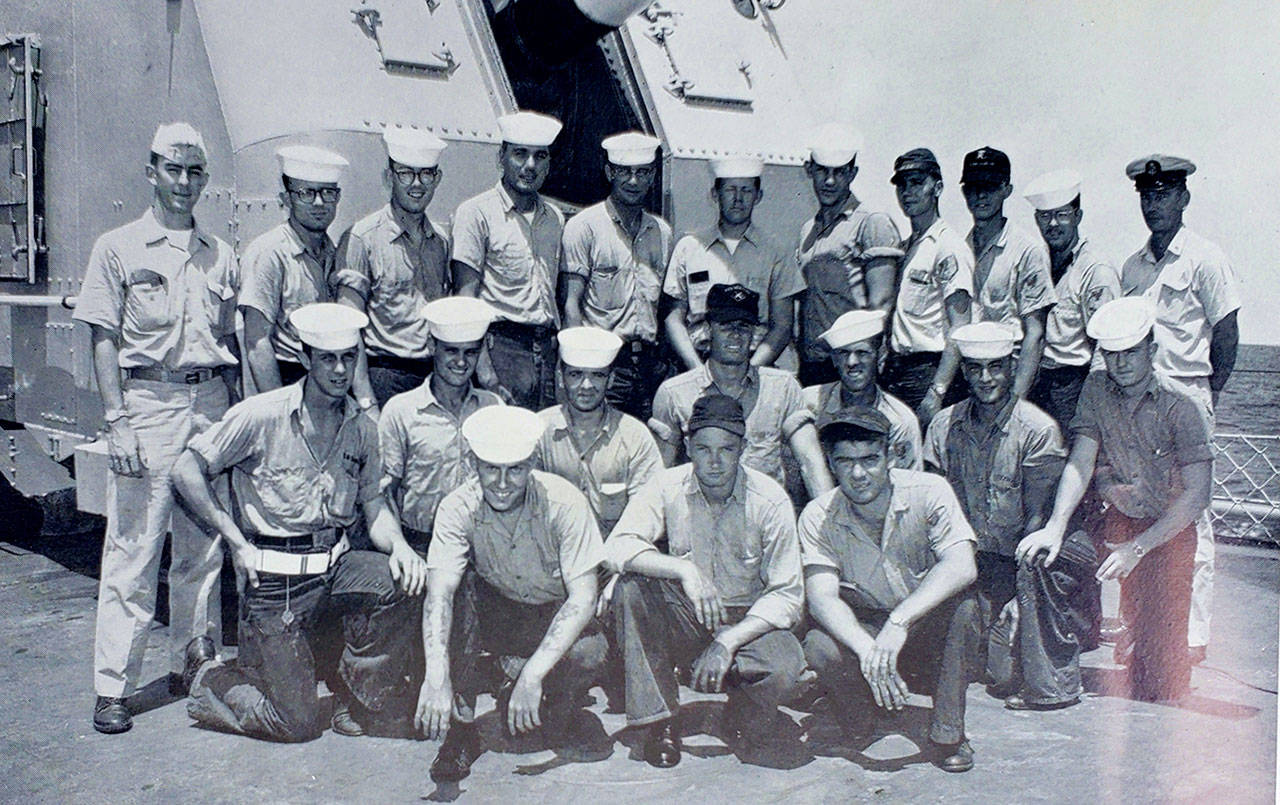Editor’s note: Inserted in today’s paper is our special section honoring local veterans. It contains photos, accounts of service in the words of the men and women who served and feature stories from our staff. Veterans Day is Wednesday. Please join us this week in gratitude for all those who have served their country.
Like many a young man his age, Dave Agner didn’t exactly know what he wanted to do with his life after high school, but he knew he wanted to expand his horizons.
So as a 17-year-old high school junior attending Shoreline High School in 1960, Agner enlisted in the United States Navy in hopes he’d see the world. Little did he know at the time, his service in the Navy would not only allow him to see foreign locales and cultures, but a chance to be a part of history … twice.
Agner, who served as a Seaman aboard the Fletcher-class destroyer USS Renshaw (DDE-499), saw the world and then some. His tour of duty would take him from Pearl Harbor to stations around the Pacific Rim, including Japan, the Philippines, Hong Kong and Midway Island.
But Agner’s story differs from other former Navy servicemen in that he took part in historic moments in American history, both happening in late 1962.
In 1961, just six months after his time as an enlisted man began, Agner found himself aboard the Renshaw, which was part of Destroyer Division 252. The ship was tasked with assisting in the recovery of NASA’s third Project Mercury orbital mission capsule, Sigma 7, and it’s pilot, famed Mercury Seven astronaut Wally Schirra, from the western Pacific Ocean.
“We came out to help the splashdown,” said Agner, who was one of the few to witness a Mercury mission splashdown not on a television screen, but firsthand. “They had eight destroyers and two aircraft carriers and countless aircraft and a submarine or two waiting for (Schirra) to splashdown.
“So we were stationed in a huge perimeter of where he was expected to splashdown. From where we were, we could see the parachutes when they opened and when he splashed down.”
The date was Oct. 3, 1962, and Agner recalled still being overwhelmed by the scope of all he was taking in.
“It was an exciting time and exciting to be part of history. But for me, I just bring it back to (being) this naive teenager,” said Agner, who now resides in rural Grays Harbor County. “Everything was just so new and big and grand for me in the Navy. … It was just ‘Wow! I can’t believe it’s happening.’”
As exciting and memorable as it was for Agner witnessing an American astronaut return from space, events that took place later that month were just as memorable, but took on a more ominous tone.
In October of 1962, the Cold War turned hot as tensions mounted between the United States and the Soviet Union in what is commonly known as the Cuban Missile Crisis. After consulting with his top advisers, President John F. Kennedy ordered a naval blockade of Cuba on Oct. 22 to prevent the delivery of further Soviet weapons systems from reaching the island. Agner’s destroyer group got the call to head to the location as naval forces mobilized to supplement ships already in the area.
“When that came down, we thought we were going to a nuclear war,” Agner said. “Everybody on the Renshaw was prepared. We were leaving Pearl Harbor, all four destroyers and the (aircraft carrier) USS Bennington were leaving Pearl Harbor at flank (top) speed for Cuba. … The United States was amassing everything we had.”
Agner said the mood of the 300 or so sailors aboard the Renshaw had changed from a typical jovial atmosphere to one of solemn professionalism.
“It was a very serious time,” he said. “Normally with the crew, there is a lot of joking and rivalries, it’s like a fraternity. But when we were steaming out there in response to that, everybody became quiet. There was no joking around. We were doing our jobs and praying that we got through this thing.”
Agner recalled his memories of the time he and his fellow shipmates were steaming toward what they though at the time would be the first combat actions of World War III.
“Every other time we left port, we knew where we were going and when we’d get back … There would always be what we called a ‘plan of the day,’” he said. “Nothing like that ever happens when you are steaming under those types of restrictions. You don’t know what’s next. You are just going.”
But on Oct. 28, 1962, war was avoided and Destroyer Group 252 got the call to turn around and return to Pearl Harbor as the two nations resolved the issue through diplomatic means.
“It was over before we got there,” Agner said. “JFK made (First Secretary of the Soviet Union Communist Party Nikita) Khrushchev blink.”
Agner’s time in the Navy and Naval Reserves ended in 1966, serving as deck crew, a gunnery team and as a yeoman for an executive officer. For a man who has served his country and in doing so has played a small part in American history, Veteran’s Day and what it means to be a vet holds special meaning for Agner.
“I’m in love with our country and in love with our flag. I don’t know how many flags I have in my house but I fly them,” he said. ” I’m a proud veteran, proud of my country and extremely mournful of the veterans that lost their lives for our country and all that they have fought and died for.”




